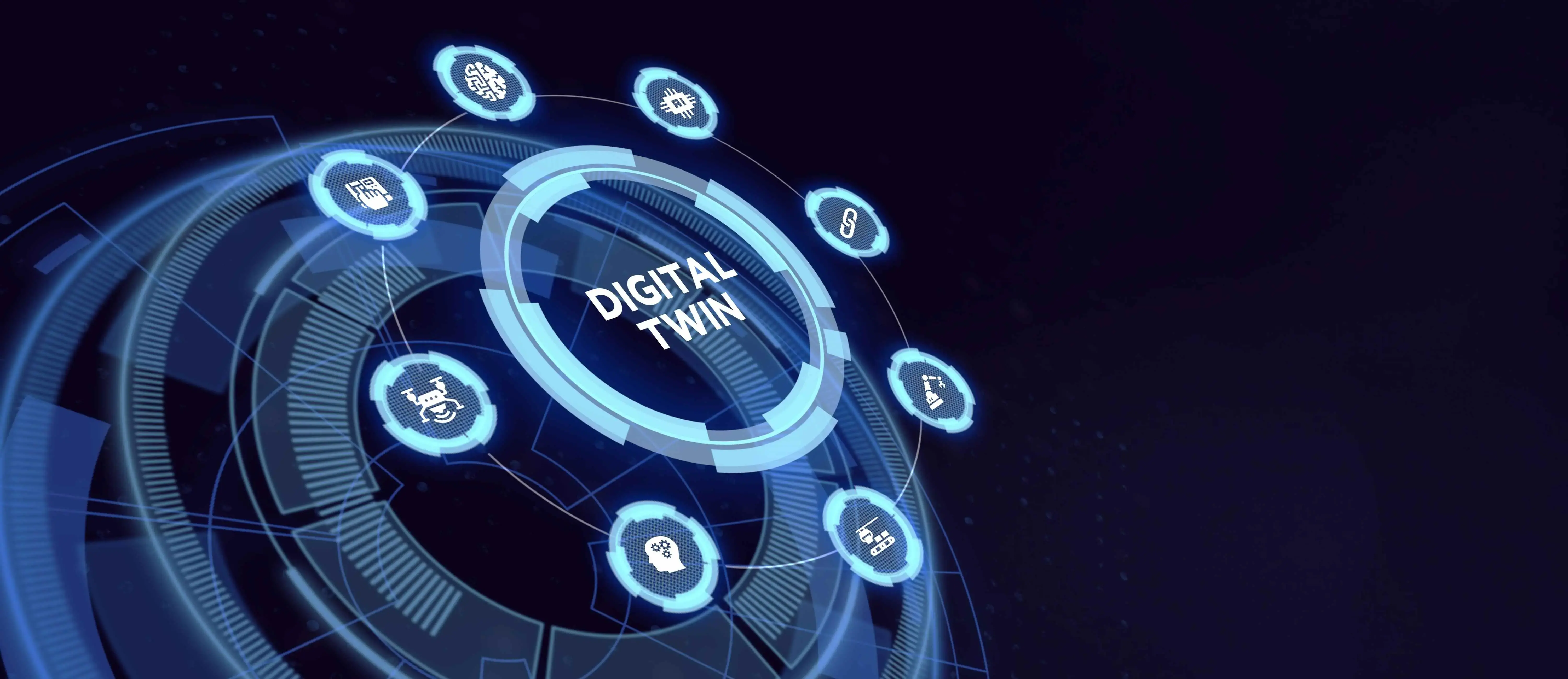Technology connects different worlds, the physical and digital worlds. For example, the metaverse also called the virtual world is a virtual environment where users can get entertained, work, create, or socialize as they would in reality.
We see users acting out reality in virtual worlds and how companies have begun to use digital technology to simulate products, and test before creating physical prototypes or versions. E.g. smart devices, buildings, machinery, etc.
Digital Twin is a type of digital technology that makes this possible, and in this article, we’ll understand what it entails.
What is Digital Twin Technology?
A Digital Twin is a digital version of a real-life entity or a physical object created by data and simulators to make real-time predictions, optimize processes, and improve decision-making.
The digital twin is built to emulate how components interact, it’s a personalized model of a physical system that continually evolves, replicating everything about the entity in digital form.
Digital twins can be standard or intelligent, the difference between the standard and intelligent digital twin is Intelligent digital twin is the advanced version that uses AI, machine learning, and advanced analytics to enhance functionalities that include predictive and prescriptive analysis, adaptive learning, and autonomous decision-making.
Let’s use the aviation industry as an example, a digital twin of an aircraft can be created to create aircraft designs before building physical prototypes. It may also be designed to see how the aircraft would fare under different weather conditions or help pilots practice landings in the case of an emergency.
Digital twin helps to understand products or systems and modify/make adjustments to increase and refine operational performance. To achieve this, data from the main asset or entity is used to build a digital twin. This data is used to plan, design, construct, operate, and maintain the main asset.
Another example is the smart watch which is built using a model, this smart watch collects data about the user's movement, heart rate, sleep consistency, etc.
The combination of data and models with IOT sensors gathers information about the user which is used to update models as the user evolves, which then advances the system involved, this is the same for engineering systems. This implies that there’s a circulation of information between the physical and virtual states.
Digital Twin follows this process of planning and decision-making, they include;
Data + Models: Digital twins are built using data from IoT devices, and predictive models (uses mathematics to predict future outcomes) to simulate the behavior of a physical entity.
Data Assimilation: This involves gathering and integrating data into virtual models to show the current state of the physical entity.
Prediction: This involves using assimilated data and models to simulate scenarios, predict future behavior, determine maintenance strategies, etc.
How Digital Twin Works
The phrase “Digital twin” was introduced by Dr. Michael Grieves. He described the idea of digital representations mirroring real-world systems and processes focusing on design, product development, manufacturing, and operational maintenance.
Digital twins date back to the 1960s and 1970s - NASA used this technology for space programming for simulations that involve replicating processes or systems in real-world situations.
The Apollo Program is said to be an early example - When the Apollo spacecraft was sent off to space, a virtual model was kept in Houston.
When the spacecraft encountered issues, NASA retrieved data from the real craft and fed it to the virtual model. The data was dynamically evolved via the simulator so it represented the condition of the damaged spacecraft. NASA used the simulator to run predictions and make decisions that helped bring the astronauts back safely.
This concept is not new and has evolved to what we know as “Digital Twin” in recent times.
The following describes how digital twin works typically;
- Data is collated in real time from sensors
- Data is locally decentralized or centrally stored in a cloud.
- Data is evaluated and simulated in a virtual representation of the asset or entity involved.
- Information from the simulator is applied to the real assets or entity.
Combining physical and virtual assets is used to optimize the performance of real assets.
Categories of Digital Twin
Digital twin falls into five categories, and they include;
Descriptive Twin: This involves a static representation of an asset including its current state and other characteristics to understand the state and performance of the asset.
Informative Twin: Informative twin integrates real-time data and historical information to provide dynamic insights and corresponding information about the state and behavior of the physical asset.
Predictive Twin: Predictive Twin uses historical data, real-time input, and predictive analytics to predict future behavior, and occurrences of the physical asset or entity this provides information regarding potential trends and outcomes to enable swift decision-making.
Comprehensive Twin: Uses advanced modeling to predict how the asset would respond to future-based scenarios.
Autonomous twin: Uses advanced AI and machine learning capacity to predict, inform, and make autonomous (independent) decisions.
Benefits and Challenges of Digital Twin
Benefits
Challenges
Benefits of Digital Twin
A few benefits of digital twin technology include;
Reduce Risk: Simulating assets or physical entities can reduce operational risks. This allows businesses to predict, identify, and prevent risks that could cause a loss of assets or revenue. It can also help in preventing physical harm pf operational staff or customers.
Safety Training: Replicating scenarios allows companies to train employees in a safe and controlled environment. This helps employees understand what measures to take in a real-life emergency.
Productivity: A company's productivity can be increased when processes are streamlined and decision-making and efficiency are improved using a digital twin representation of an asset.
Cost-Saving: Digital twin technology helps reduce operational costs. by predicting or determining when a product requires maintenance and identifying potential issues that can be addressed before they occur. This reduces downtime and prevents system crashes.
Challenges of Digital Twin
Start-Up Cost: The initial cost for developing a digital twin can be very expensive as it requires a lot of resources e.g. human resources, data management resources, sensors and IoT devices, software for simulation, modeling, data analytics, etc.
Ethical Concerns: There may be issues regarding data privacy, data security, ownership, or consent especially when the personal information of individuals is involved. For instance, users of a product that collects personalized information must be aware of how and what their information would be used for.
Cyber Security Concerns: Digital twins are vulnerable because they rely on network connectivity and a vast amount of data. If there's poor security proof, it can be exploited by cyber attackers.
Unpredictable Actions: Digital systems can be unpredictable as they can produce unexpected results due to flaws in algorithms or data which may be of poor quality, outdated or incomplete.
Continuous Maintenance and Updates: Continuous maintenance and updates are required for both physical asset and virtual representations, this involves a lot of resources.
Applications of Digital Twin
The Applications and Potential Applications of Digital Twin are as follows;
Energy and Utilities: Digital Twin technology allows companies to create virtual models of energy assets and simulate real-time performance to improve operational performance. The asset can be tested remotely to identify issues and optimize performance for improved operational processes.
Healthcare: Digital twins of surgical procedures use medical imaging data, such as CT scans to create 3d models of the patient's body anatomy. Doctors can simulate the complex surgical procedure before operating on the individual.
Architecture Engineering and Construction: Digital twins can be used in the construction of buildings for example - BIM(Building Information Modelling ) technology can be used to create 3D models of buildings to visualize the designs, and also simulate the construction process which may include identifying potential risk before starting actual construction.
Manufacturing: Digital twins can be used to replicate the production process to evaluate performance and optimize operations. As well, digital twins of machines can predict when maintenance is needed based on previous maintenance records this helps to analyze the overall health, and potential faults and also propose maintenance checks or schedules to minimize downtime or shutdown.
Aerospace Engineering: In aerospace technology, a digital twin of an aircraft can be created to replicate flight scenarios for training. This creates a realistic training experience for pilots to practice flying and also how to handle emergencies.
Summary
The different applications and potential applications of digital twins vary across industries. This technology is still beyond reach, especially for complex systems.
In medical fields, implementing a digital twin for an entire human system can be very complex. There have been modeling of some features of the human body for instance a patient's heart is simulated to understand how best to operate. However, replicating an entire body system is yet to be achieved.
This technology is still evolving, and there is ongoing research to expand its capabilities and also address the limitations across different industries.
Frequently Asked Questions
What technology powers niche search engines?
Niche search engines use specialized algorithms and machine learning to cater to specific data types or user needs. This specialized approach allows them to deliver more targeted and relevant results than general search engines.
What role does technology diversity play in Microservices architecture?
Microservices allow teams to choose the most suitable technology stack for each service based on its specific requirements. This flexibility fosters innovation and allows the use of different programming languages, databases, and frameworks.
How does AI technology make website building easier?
AI technology makes website building easier by providing drag-and-drop functionality, user-friendly interfaces, and automated features that streamline the process, allowing users to create fully functional websites in just a few clicks.
How do evolving web technologies and trends impact the strategies for XSS prevention?
Evolving technologies require adapting prevention strategies. New frameworks may introduce new risks, necessitating continuous education, testing, and the implementation of the latest security measures.

Jessica Agorye is a developer based in Lagos, Nigeria. A witty creative with a love for life, she is dedicated to sharing insights and inspiring others through her writing. With over 5 years of writing experience, she believes that content is king.
View all posts by Jessica Agorye




















